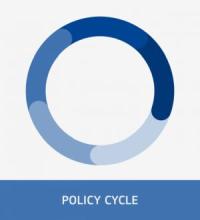About CRIE
CRIE supports Member States setting up the necessary arrangements for carrying out CIE of ESF funded interventions by:
- organising training sessions on impact evaluation methods;
- providing tailor-made advice on methodological and data issues that arise when designing, implementing and evaluating an initiative;
- carrying out the quantitative analysis for a CIE.
CRIE is also committed to:
- carrying out applied and theoretical research into Counterfactual Impact Evaluation (CIE), in both microeconomic and macroeconomic models;
- building bridges between EU policy makers and the scientific community.

What is Counterfactual Impact Evaluation (CIE)? In its simplest form, CIE consists of comparing the outcomes of interest for those having benefitted from a policy or programme (the 'treated group') with those of a group similar in all respects to the treatment group (the 'comparison/control group'), except that it has not been exposed to the policy or programme. The comparison group provides information on 'what would have happened to the members subject to the intervention had they not been exposed to it', the counterfactual case.
The case for CIE is based on the need to collect evidence and determine whether policy objectives have been met and, ultimately, whether the resources were used efficiently. These answers feed back into the design and implementation of future interventions and budgetary decisions. In light of this, the European Commission is committed to making impact evaluation part of a policy implementation life cycle.
| Quality Assurance Support (QAS) for CIE |
 |
| CoP - CIE - ESF |
 |
| Evaluation Ready – Policy evaluations |
 |
| FAQ on the policy cycle phase | 
|
Past Projects
| Data Fitness Initiative for CIE | 
|
Tools
Latest knowledge from this Project
More information
| Originally Published | Last Updated | 08 Sep 2020 | 06 Dec 2024 |
| Knowledge service | Metadata | Microeconomic Evaluation |
Share this page
